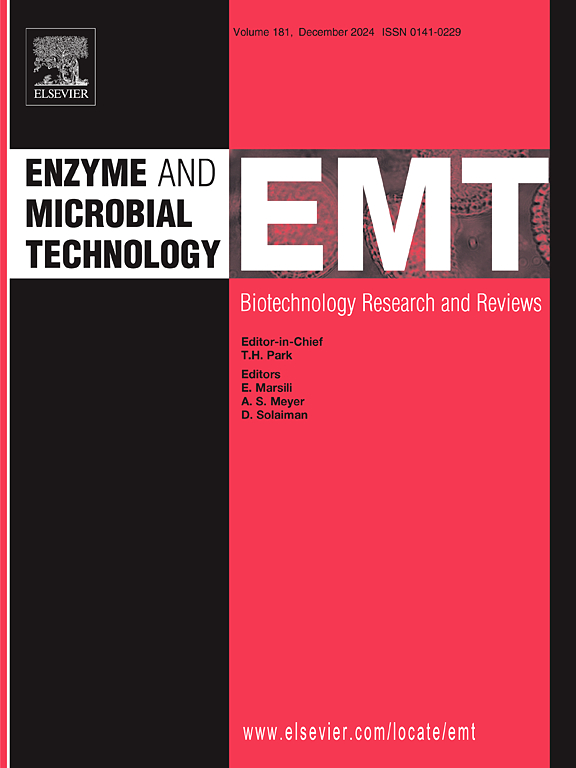A lateral flow biosensor based on duplex-specific nuclease and novel isothermal amplification for detection of influenza virus
IF 3.7
3区 生物学
Q2 BIOTECHNOLOGY & APPLIED MICROBIOLOGY
引用次数: 0
Abstract
Here, we describe a lateral flow biosensor capable of detecting H1N1 virus by integrating duplex-specific nuclease (DSN) and a novel isothermal amplification, two probe isothermal amplification (TPIA). Probe A and probe B of TPIA form DNAs of varying lengths by repeated polymerization and displacement of each other. Probe A extends into single-stranded DNA (ssDNA) of varying lengths containing multiple hairpin structures. Probe B extends into double-stranded DNA hairpins of different lengths. Both the 5′ end of the single strand DNA (ssDNA) probe A and probe B were joined by a ssDNA tail via a C3 spacer. These tails were designed to be complementary to capture sequence of probe C (5 'end modifies fluorescein [FAM]) immobilized on magnetic beads. Cyclical DSN cleavage of probe C was triggered by target H1N1 RNA to release a capture sequence to capture TPIA product DNA with multiple biotins. The TPIA product/capture sequence complex of FAM can be captured by anti-FAM in the test strip test area, and the accumulation of gold nanoparticles causes a red band to appear in the test area. The limit of detection of specific RNA was as low as 829 fM with a linear range from 1 pM to 100 nM. This visual detection system is suitable for influenza A H1N1 virus point-of-care diagnosis in non-specialist personnel and low-resource settings.
基于双特异性核酸酶和新型等温扩增的流感病毒检测横向流动生物传感器
在这里,我们描述了一种能够检测H1N1病毒的横向流动生物传感器,通过整合双特异性核酸酶(DSN)和一种新型等温扩增,双探针等温扩增(TPIA)。TPIA探针A和探针B通过反复聚合和相互位移形成不同长度的dna。探针A延伸到包含多个发夹结构的不同长度的单链DNA (ssDNA)。探针B延伸成不同长度的双链DNA发夹。单链DNA (ssDNA)探针A和探针B的5 '端均由ssDNA尾部通过C3间隔物连接。这些尾部被设计用来补充捕获固定在磁珠上的探针C(5 '端修饰荧光素[FAM])的序列。靶H1N1 RNA触发探针C的周期性DSN切割,释放捕获序列,与多种生物素一起捕获TPIA产物DNA。FAM的tfia产物/捕获序列复合物可在试纸测试区被anti-FAM捕获,金纳米颗粒的积累导致测试区出现红色条带。特异性RNA的检出限低至829 fM,线性范围为1 pM ~ 100 nM。该视觉检测系统适用于非专业人员和资源匮乏环境中的甲型H1N1流感病毒即时诊断。
本文章由计算机程序翻译,如有差异,请以英文原文为准。
求助全文
约1分钟内获得全文
求助全文
来源期刊

Enzyme and Microbial Technology
生物-生物工程与应用微生物
CiteScore
7.60
自引率
5.90%
发文量
142
审稿时长
38 days
期刊介绍:
Enzyme and Microbial Technology is an international, peer-reviewed journal publishing original research and reviews, of biotechnological significance and novelty, on basic and applied aspects of the science and technology of processes involving the use of enzymes, micro-organisms, animal cells and plant cells.
We especially encourage submissions on:
Biocatalysis and the use of Directed Evolution in Synthetic Biology and Biotechnology
Biotechnological Production of New Bioactive Molecules, Biomaterials, Biopharmaceuticals, and Biofuels
New Imaging Techniques and Biosensors, especially as applicable to Healthcare and Systems Biology
New Biotechnological Approaches in Genomics, Proteomics and Metabolomics
Metabolic Engineering, Biomolecular Engineering and Nanobiotechnology
Manuscripts which report isolation, purification, immobilization or utilization of organisms or enzymes which are already well-described in the literature are not suitable for publication in EMT, unless their primary purpose is to report significant new findings or approaches which are of broad biotechnological importance. Similarly, manuscripts which report optimization studies on well-established processes are inappropriate. EMT does not accept papers dealing with mathematical modeling unless they report significant, new experimental data.
 求助内容:
求助内容: 应助结果提醒方式:
应助结果提醒方式:


